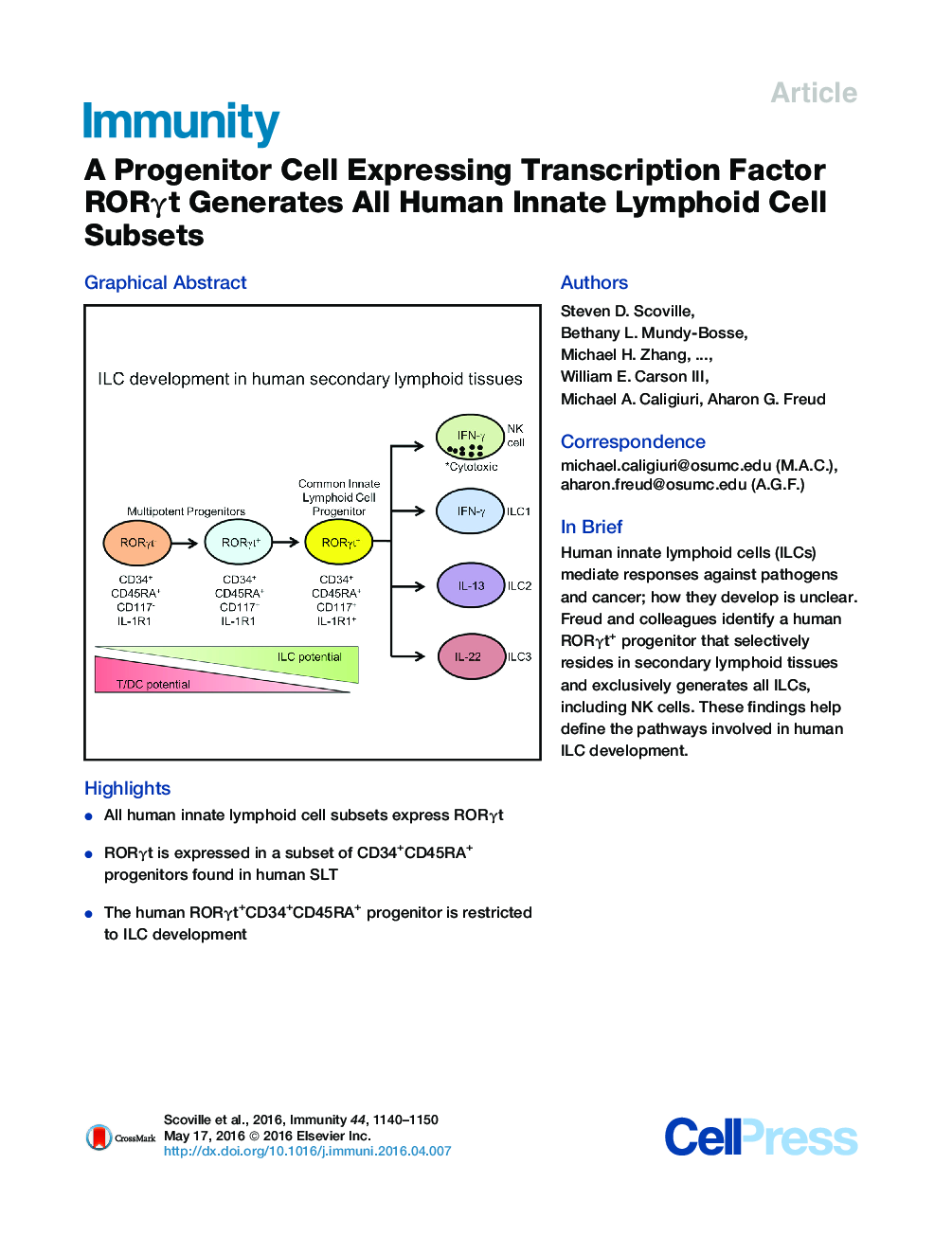| Article ID | Journal | Published Year | Pages | File Type |
|---|---|---|---|---|
| 3352882 | Immunity | 2016 | 11 Pages |
•All human innate lymphoid cell subsets express RORγt•RORγt is expressed in a subset of CD34+CD45RA+ progenitors found in human SLT•The human RORγt+CD34+CD45RA+ progenitor is restricted to ILC development
SummaryThe current model of murine innate lymphoid cell (ILC) development holds that mouse ILCs are derived downstream of the common lymphoid progenitor through lineage-restricted progenitors. However, corresponding lineage-restricted progenitors in humans have yet to be discovered. Here we identified a progenitor population in human secondary lymphoid tissues (SLTs) that expressed the transcription factor RORγt and was unique in its ability to generate all known ILC subsets, including natural killer (NK) cells, but not other leukocyte populations. In contrast to murine fate-mapping data, which indicate that only ILC3s express Rorγt, these human progenitor cells as well as human peripheral blood NK cells and all mature ILC populations expressed RORγt. Thus, all human ILCs can be generated through an RORγt+ developmental pathway from a common progenitor in SLTs. These findings help establish the developmental signals and pathways involved in human ILC development.
Graphical AbstractFigure optionsDownload full-size imageDownload high-quality image (145 K)Download as PowerPoint slide
